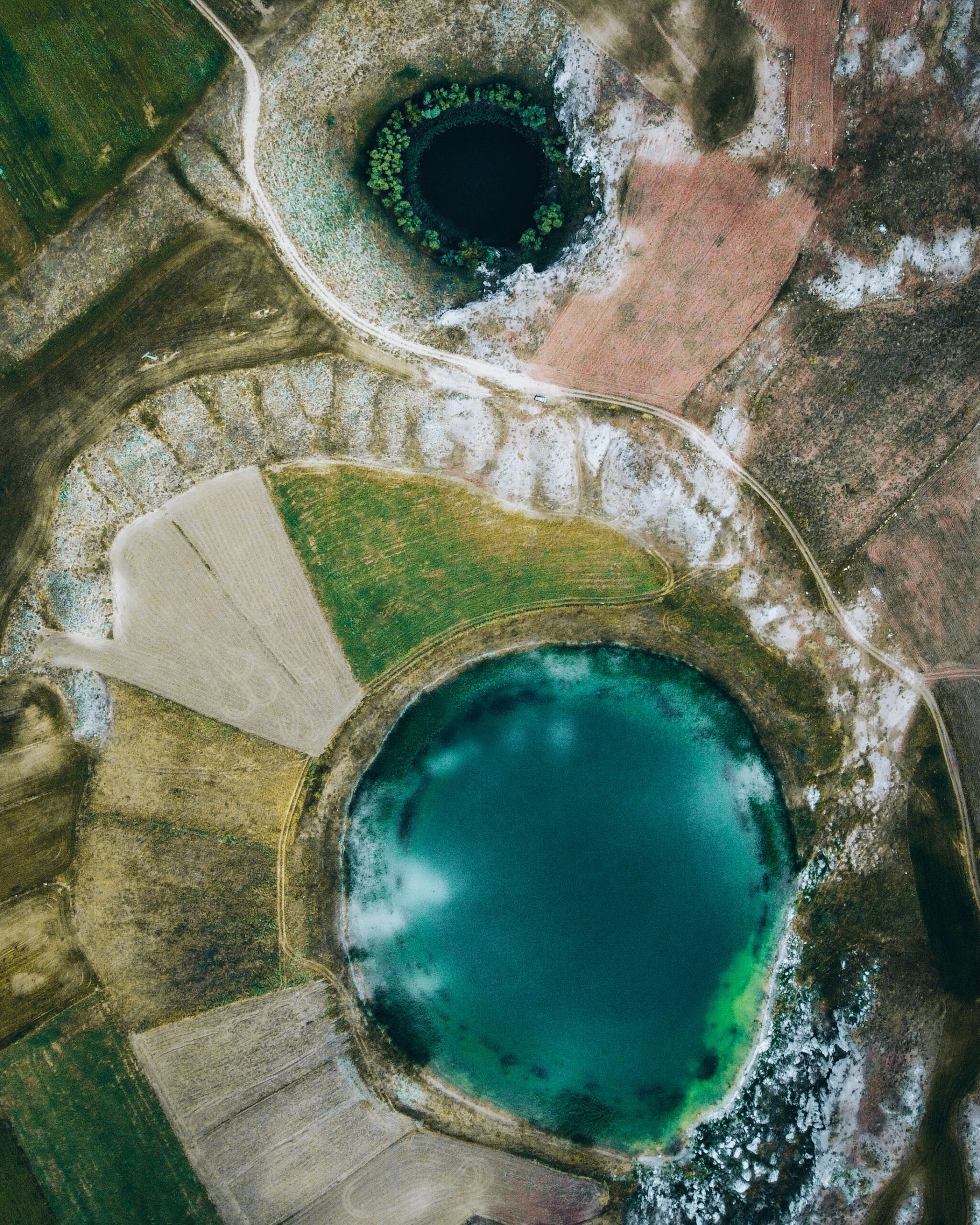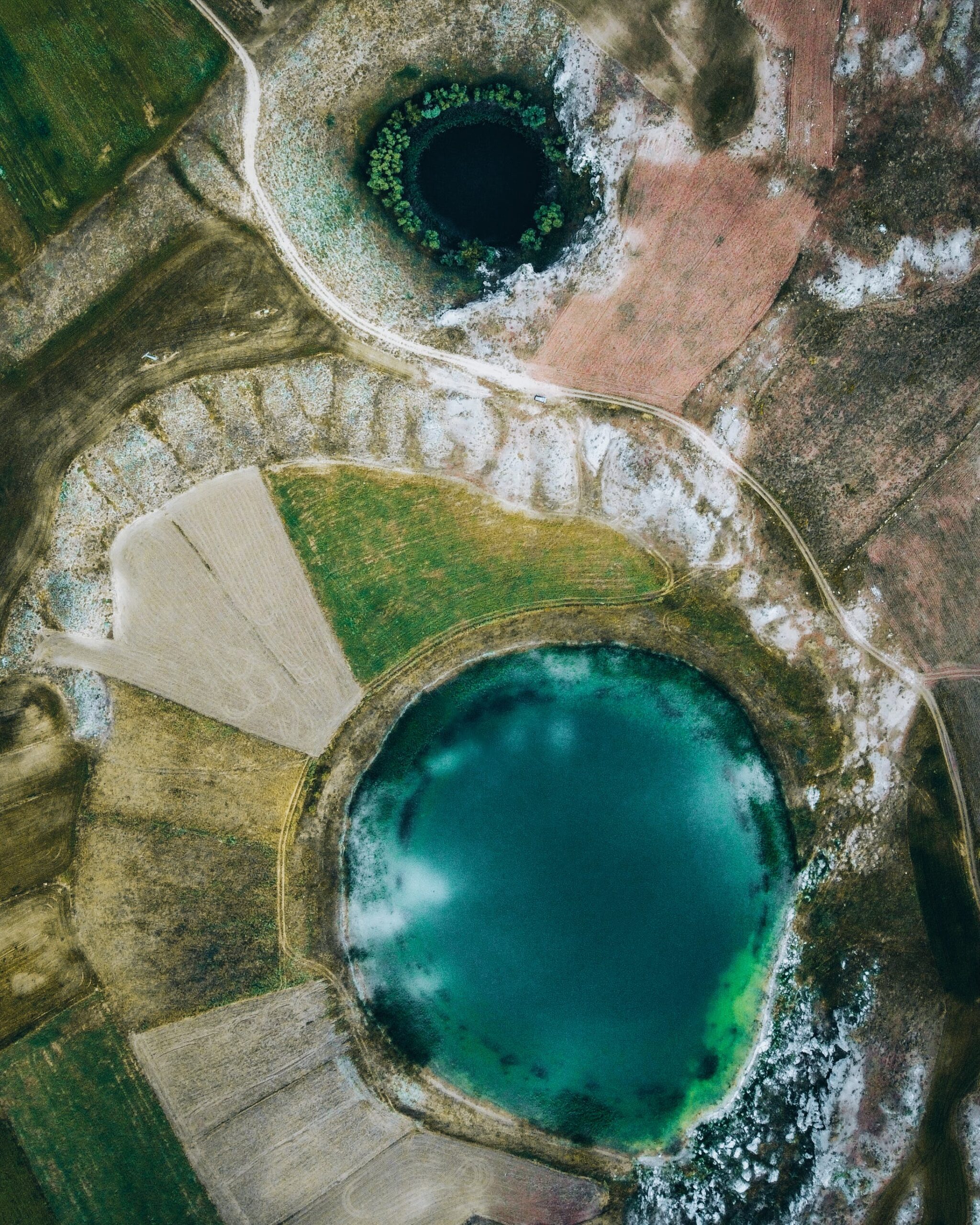Are you struggling to maintain well water with high levels of calcium and magnesium hardness? If so, you’re not alone. Many homeowners face the challenges of dealing with hard water, which can lead to various issues such as scale buildup, clogged pipes, and overall decreased water quality. Fortunately, there are solutions available to help you tackle this problem and ensure your well water remains clean and usable. In this article, we will explore effective methods and tips on how you can maintain well water with high calcium and magnesium hardness, providing you with the knowledge and guidance you need for a smoother water maintenance experience. Whether you’re a seasoned well owner or a newcomer to the world of hard water, this article will equip you with valuable insights to keep your well water in top-notch condition.
Testing the Water Hardness
Using Test Strips
One way to test the hardness of your well water is by using test strips. These strips are easy to use and provide quick results. Simply dip the strip in a water sample and compare its color to the color chart provided. The chart will indicate the level of hardness based on the color match. This method is convenient and suitable for quick assessments of your water’s hardness.
Using a Water Testing Kit
For a more comprehensive analysis of your well water’s hardness, you can opt for a water testing kit. These kits typically come with multiple tests to measure various aspects of water quality. Follow the instructions provided with the kit to collect a water sample and perform the tests. The kit will provide detailed results, including the hardness level of your water. This method is more accurate and informative, especially if you want to delve deeper into your well water’s composition.
Interpreting the Results
Once you have the results of your water hardness test, it’s important to understand what they mean. Water hardness is typically measured in grains per gallon (gpg) or parts per million (ppm). A water hardness level below 1 gpg or 17.1 ppm is considered soft, while anything above 7 gpg or 120 ppm is considered very hard. Moderate hardness falls in between these ranges.
Understanding the hardness level of your well water is crucial when considering suitable treatment options. Higher hardness levels may require more effective methods of treatment to ensure a satisfactory water quality.
Understanding Calcium and Magnesium Hardness
What is Water Hardness?
Water hardness refers to the concentration of minerals, primarily calcium and magnesium, in the water. These minerals are naturally present in most water sources, including well water. The higher the concentration of calcium and magnesium, the harder the water becomes. Hard water can have various effects on your daily activities and the performance of household appliances.
Causes of High Calcium and Magnesium Hardness in Well Water
The primary cause of high calcium and magnesium hardness in well water is the geological composition of the area from which the water is sourced. Certain regions have naturally higher levels of these minerals in their groundwater. Additionally, the type of bedrock and soil through which the water passes can contribute to the elevated levels of calcium and magnesium.
Effects of High Calcium and Magnesium Hardness
High calcium and magnesium hardness can have several undesirable effects. Firstly, it can result in the formation of scale and mineral build-up in pipes, appliances, and fixtures. This can reduce the lifespan and efficiency of your plumbing system. Secondly, hard water can make it difficult to lather soap and detergent, leading to increased soap consumption. It can also leave behind streaks and spots on dishes, glassware, and surfaces. Lastly, hard water may affect the efficiency of water heating systems, leading to increased energy consumption and higher utility bills.

Water Treatment Options
Water Softening
Water softening is one of the most common and effective methods of treating high calcium and magnesium hardness. This process involves replacing the calcium and magnesium ions in the water with sodium ions. The most commonly used water softening systems employ ion exchange technology, where the hard water passes through a resin tank that contains sodium ions. As the water flows through the resin, the calcium and magnesium ions are exchanged for sodium ions, resulting in softened water.
Reverse Osmosis
Reverse osmosis is another popular method for treating high calcium and magnesium hardness. This process involves passing the water through a semipermeable membrane that effectively removes dissolved solids, including calcium and magnesium ions. Reverse osmosis systems typically have multiple filtration stages, allowing for the removal of various contaminants and improving the overall water quality.
Ion Exchange
Ion exchange systems, as mentioned earlier, are commonly used for water softening. These systems rely on resin beads that attract and exchange ions in the water. When the resin is saturated with calcium and magnesium ions, it undergoes a regeneration process using salt or potassium chloride to recharge the resin and ensure continued water softening.
Chemical Treatment
Chemical treatment options involve adding specific chemicals to the water to reduce the effects of high calcium and magnesium hardness. For example, adding polyphosphates can help inhibit scale formation and reduce the negative effects of hard water. Acid injection can also be used to lower the pH of the water and reduce hardness. Chelating agents can also be employed to bind with the calcium and magnesium ions, making them less likely to cause scaling.
Well Rehabilitation
In cases where the water hardness issue is rooted in the well itself, well rehabilitation techniques may be necessary. Mechanical cleaning methods involve physically removing scale or sediment from the well using brushes, high-pressure jets, or other tools. Chemical cleaning can be done by introducing cleaning agents into the well to dissolve scale and mineral deposits. Shock chlorination, which involves introducing a high concentration of chlorine into the well, can help disinfect and clean the well from bacteria and other microorganisms.
Water Softening Systems
Salt-Based Water Softeners
Salt-based water softeners, also known as ion exchange water softeners, are the most commonly used systems for water softening. These systems use resin tanks filled with sodium ions to exchange for the calcium and magnesium ions in the water. The sodium ions are supplied through a brine tank, which requires periodic refilling with salt pellets.
Salt-based water softeners effectively remove hardness from the water, resulting in a noticeable improvement in lathering ability, reduction in scaling, and increased lifespan of appliances and plumbing fixtures. However, it’s important to consider the added sodium in the softened water if you’re on a low-sodium diet or have specific medical conditions.
Salt-Free Water Conditioners
Salt-free water conditioners, also known as descalers or water conditioners, don’t remove calcium and magnesium ions from the water like salt-based systems do. Instead, they alter the chemical structure of these minerals, making them less likely to form scale. These systems use various technologies such as template-assisted crystallization (TAC) or electromagnetic fields to prevent scale build-up. Salt-free systems are a popular choice for people who want to avoid the added sodium in their water and are more environmentally friendly due to the absence of brine discharge.
While salt-free water conditioners can help reduce the negative effects of hard water, they may not provide the same level of water softening as salt-based systems. Nevertheless, they are often considered a viable alternative for those who prefer a salt-free solution.
Benefits and Limitations
Both salt-based water softeners and salt-free water conditioners have their own benefits and limitations. Salt-based systems offer a more comprehensive water softening solution, effectively removing hardness and providing noticeable improvements in water quality. On the other hand, salt-free systems are more environmentally friendly and require less maintenance, as they don’t rely on salt refilling. However, salt-free systems may not be as effective in areas with very hard water, and the degree of water softening achieved may vary.
When choosing a water softening system, consider factors such as your water hardness level, personal preferences, health considerations, and environmental impact to make an informed decision.

Reverse Osmosis Systems
How Reverse Osmosis Works
Reverse osmosis (RO) is a water purification process that involves forcing water through a semipermeable membrane. This membrane has tiny pores that allow water molecules to pass through while effectively blocking larger particles, contaminants, and dissolved minerals, including calcium and magnesium ions. The purified water is collected for use, while the rejected impurities are flushed away.
Effectiveness in Removing Calcium and Magnesium Hardness
Reverse osmosis systems are highly effective in removing calcium and magnesium hardness from water. The semipermeable membrane in these systems can have a rejection rate of up to 99% for dissolved solids, ensuring that a significant amount of hardness is removed. The result is softened water that is suitable for various applications, including drinking, cooking, and household use.
Other Contaminants Removal
In addition to calcium and magnesium hardness, reverse osmosis systems are also capable of removing a wide range of other contaminants. These can include heavy metals, chlorine, pesticides, herbicides, viruses, bacteria, and other dissolved solids. The multiple filtration stages and the high-pressure process of reverse osmosis make it a reliable choice for comprehensive water purification.
Maintenance and Filters Replacement
Maintaining a reverse osmosis system involves regular filter replacements to ensure optimal performance. The frequency of filter replacements depends on factors such as the quality of the source water and the usage of the system. Typically, sediment filters, carbon filters, and the reverse osmosis membrane require periodic replacement to ensure efficient removal of contaminants and hardness.
Ion Exchange Systems
Principle of Ion Exchange
Ion exchange systems rely on the principle of exchanging ions in the water with ions present in the system’s resin. The resin, typically in the form of small beads, attracts and holds onto ions present in the water. In the case of water softening, the resin releases sodium ions into the water in exchange for the calcium and magnesium ions. This process results in the removal of hardness from the water.
Suitability for High Calcium and Magnesium Hardness
Ion exchange systems are well-suited for treating high calcium and magnesium hardness levels in well water. The resin beads are designed to specifically target these ions and efficiently exchange them for sodium ions. As a result, the water that passes through the ion exchange system is effectively softened, making it suitable for various applications.
Regeneration Process
Over time, the resin beads in the ion exchange system become saturated with calcium and magnesium ions and need to be regenerated. This process involves flushing a brine solution through the system, which replenishes the sodium ions on the resin. The excess calcium and magnesium ions are washed away during the regeneration process, restoring the system’s ability to effectively soften water.
Pros and Cons
Ion exchange systems have both advantages and limitations. On the positive side, these systems are highly efficient in removing hardness from the water, resulting in various benefits such as improved lathering ability, reduced scaling, and increased lifespan of appliances and plumbing fixtures. Ion exchange systems are also relatively low-maintenance, requiring periodic regeneration and occasional resin replacement.
However, it’s important to note that ion exchange systems add sodium to the water, which may not be suitable for individuals on low-sodium diets or those with specific health conditions. Additionally, ion exchange systems may have a limited capacity for high volumes of water or extremely hard water, requiring larger systems or additional treatment methods.

Chemical Treatment Options
Adding Polyphosphates
Adding polyphosphates to well water is a chemical treatment option that can help inhibit the formation of scale and reduce the negative effects of high calcium and magnesium hardness. Polyphosphates form a protective layer on the surfaces that come into contact with water, preventing scale from adhering and reducing the likelihood of mineral build-up. This treatment method is relatively simple and can be done by injecting polyphosphates into the water supply.
Using Acid Injection
Acid injection is another chemical treatment option for reducing water hardness. By injecting an acid solution into the well or the water supply, the pH of the water can be lowered, leading to a decrease in hardness. Acid injection should be done carefully, as it requires precise monitoring of the pH levels to prevent over-acidification. It’s recommended to consult with a professional to ensure the correct dosage and application of acid injection.
Using Chelating Agents
Chelating agents can be used to bind with the calcium and magnesium ions in the water, making them less likely to cause scaling or other issues. These agents work by forming stable complexes with the metal ions, preventing them from precipitating and forming scale. Chelating agents can be added to the water directly or through a chemical feeder system, depending on the specific treatment requirements.
It’s important to note that chemical treatment options may require regular monitoring and adjustments to maintain the desired results. Consulting with a water treatment professional can help determine the most suitable chemical treatment method for your specific needs.
Well Rehabilitation Techniques
Mechanical Cleaning
Mechanical cleaning techniques involve physically removing scale, sediment, and other deposits from the well. This can be done using various tools such as brushes, high-pressure jets, or specialized equipment designed for well cleaning. Mechanical cleaning helps improve the flow of water and removes any obstructions or build-up within the well. Regular mechanical cleaning can help prevent the accumulation of scale and maintain the well’s efficiency.
Chemical Cleaning
Chemical cleaning of wells involves the use of specific cleaning agents that can dissolve scale and mineral deposits. These cleaning agents are often applied by introducing them into the well and allowing them to react with the deposits. The selection of cleaning agents and the procedure for chemical cleaning should be done in consultation with experts to ensure safety and effectiveness.
Shock Chlorination
Shock chlorination is a well rehabilitation technique that involves the introduction of a high concentration of chlorine into the well. This process helps disinfect the well, eliminating bacteria, viruses, and other microorganisms that may be present. Additionally, shock chlorination can help clean and remove biofilm and other organic matter that may accumulate in the well over time. It’s important to follow proper procedures and guidelines to ensure the correct dosage and duration of shock chlorination.

Maintenance and Upkeep
Regular Testing and Monitoring
To ensure the ongoing effectiveness of any water treatment system, regular testing and monitoring of the water quality are essential. Testing should be performed periodically to assess the hardness level and other parameters of your well water. Monitoring the performance of treatment systems, such as water softeners or reverse osmosis systems, will help identify any issues or changes in water quality that may require attention.
Cleaning and Replacing Filters
For systems that utilize filters, regular cleaning and filter replacements are key to maintaining optimal performance. Sediment filters, carbon filters, and other filter media can become clogged or exhausted over time, resulting in reduced filtration efficiency. Follow the manufacturer’s recommendations for cleaning and replacing the filters to ensure continued water treatment effectiveness.
Regeneration or Recharging
If you have a water softening system utilizing ion exchange technology, regular regeneration, or recharging of the system is necessary to ensure continued water softening. This typically involves flushing a brine solution through the system to recharge the resin. Follow the manufacturer’s instructions for the frequency and procedure of regeneration to maintain the desired level of water softening.
Professional Maintenance
In addition to routine maintenance tasks, it’s advisable to engage the services of a professional for periodic maintenance and inspection of your water treatment systems. A professional can assess the performance of the system, identify any issues or potential improvements, and provide expert advice on maintaining the water quality in your well.
Considerations for Well Water Users
Health Effects
The hardness of well water, specifically the concentration of calcium and magnesium ions, does not pose significant health risks. In fact, calcium and magnesium are essential minerals that contribute to our daily nutrient intake. However, the effects of high hardness can be inconvenient and potentially impact the overall taste and quality of drinking water. Individuals with specific health conditions or on low-sodium diets may need to consider treatment options that minimize added sodium from water softening systems.
Environmental Impact
When selecting a water treatment option, consider the potential environmental impact. For example, salt-based water softeners require the periodic replenishment of salt pellets, which ultimately result in sodium chloride discharge into the wastewater system. This discharge can contaminate freshwater sources if not properly managed at wastewater treatment plants. Salt-free water conditioners, on the other hand, are more environmentally friendly as they do not rely on salt or contribute to the discharge of sodium chloride.
Water Consumption and Efficiency
Water treatment systems, such as reverse osmosis or ion exchange systems, may result in some water wastage during the purification process. It’s important to consider the water consumption and efficiency of the treatment systems, especially in areas where water scarcity or conservation is a concern. Choosing systems with higher efficiency ratings or implementing additional measures to minimize water wastage can help mitigate environmental impacts and reduce overall water consumption.
In conclusion, maintaining well water with high calcium and magnesium hardness requires an understanding of the water quality, suitable treatment options, and regular maintenance. By testing the water hardness, utilizing appropriate treatment systems, and implementing well rehabilitation techniques when necessary, you can ensure the quality and usability of your well water. Consider factors such as personal preferences, health considerations, and environmental impacts when making decisions about treatment options. Regular monitoring, cleaning, and maintenance are essential for preserving the effectiveness of water treatment systems and maintaining optimal water quality for your daily needs.


